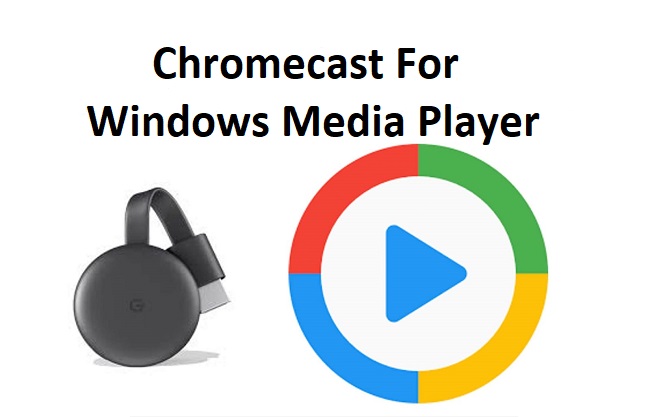Are you a Windows user looking to elevate your media experience by casting to a bigger screen? Google’s Chromecast might just be the solution you’re seeking.
This article delves into the compatibility of Chromecast with Windows, specifically for Windows Media Player, and provides a guide to setting it up.
With the advent of streaming, users are constantly looking for ways to bridge their PCs with their home entertainment systems.
In this article, we explore how to install Windows Media Player on a Windows PC, cast media content to a Chromecast device using Google Chrome, explore alternative casting methods, and discuss media player compatibility with Chromecast.

Chromecast Compatibility with Windows
Chromecast technology has revolutionized how we consume media, making it easier to stream content from small screens to larger displays.
For Windows users, the good news is that Chromecast is indeed available and compatible with a range of Windows versions including Windows 10, Windows 8.1, and even Windows 7.
How to Use Chromecast with Windows Media Player
Although Windows Media Player does not have built-in casting features, you can still stream content by following these steps:
- Connect Chromecast: Plug your Chromecast device into the HDMI port of your TV and connect it to power.
- Set Up Chromecast: Ensure that Chromecast is set up properly using the Google Home app on a mobile device.
- Open Windows Media Player: Launch Windows Media Player on your PC.
- Cast the Screen: Use a Chrome browser to cast your entire desktop, which includes the Windows Media Player window, by selecting the ‘Cast’ option from the Chrome settings menu.
Is Chromecast for Windows Media Player Still Working?
Yes, while Windows Media Player does not have direct casting support, the workaround using Chrome’s cast feature is still a viable option.
How to Install Windows Media Player on Windows PC
Windows Media Player comes pre-installed on most versions of Windows. If you need to install or reinstall it, follow these steps:
- Access Windows Features: Go to ‘Control Panel’ > ‘Programs’ > ‘Turn Windows features on or off’.
- Enable Windows Media Player: Scroll down to ‘Media Features’, expand the folder, check ‘Windows Media Player’, and click ‘OK’.
How to Chromecast Windows Media Player Using Google Chrome
Chromecasting from Windows Media Player requires using the Google Chrome browser as a conduit since the player doesn’t natively support casting. Here’s how:
- Open Google Chrome: Ensure you have the latest version installed.
- Cast the Desktop: Click on the three-dot menu in the upper-right corner, select ‘Cast’, and choose ‘Cast desktop’. Select your Chromecast device.
- Play Media in Windows Media Player: Start playing your media file, and it will display on your Chromecast-connected TV.
Alternate Way to Chromecast Windows Media Player
If you encounter issues with Google Chrome or prefer a different approach, third-party software like VLC Media Player offers built-in Chromecast support. Here’s a brief on how to use it:
- Install VLC Media Player: Download from the official site and install it.
- Stream to Chromecast: Open VLC, click on ‘Playback’ > ‘Renderer’ and choose your Chromecast device. Open your media file in VLC, and it will stream to your TV.
Compatible Media Players with Chromecast Support
Several media players offer native Chromecast support, providing a smoother streaming experience without the need for browser workarounds. These include:
- VLC Media Player: A free, open-source multimedia player that supports a variety of formats and streaming protocols.
- Plex: Organizes video, music, and photos from personal media libraries and streams them to smart TVs, streaming boxes, and mobile devices.
- BubbleUPnP: Streams all your music, videos, and photos to various devices in your house, including Chromecast.
Is Chromecast for Windows Media Player Safe?
Using Chromecast to cast content from Windows Media Player is safe as long as you are using the official software from Google and keep your browser updated to the latest version to prevent any security vulnerabilities.
Benefits of Chromecast for Windows Media Player
- Convenience: Cast media from your PC to your TV without the need for cables.
- Quality: Enjoy high-definition video and audio streaming.
- Accessibility: Easily control playback from your computer.
Is Chromecast for Windows Media Player Free?
Chromecast itself requires the purchase of the hardware, but there are no additional fees to cast from your Windows PC to the Chromecast device.
Conclusion
Chromecast provides a seamless bridge between your Windows Media Player library and your television. Despite lacking native support from Windows Media Player, Chromecast remains a versatile and user-friendly option for Windows users.
The setup is simple, the streaming quality is high, and the benefits are clear. As technology progresses, the integration only becomes more seamless, making Chromecast a valuable tool for anyone looking to enhance their media playback experience on a larger screen.
For those seeking a more seamless experience, VLC and other media players are excellent alternatives with built-in Chromecast support. Whichever method you choose, the world of streaming content from your Windows PC to your TV is at your fingertips.
Remember to keep your devices updated and enjoy the world of streaming with Chromecast and Windows Media Player today!



















